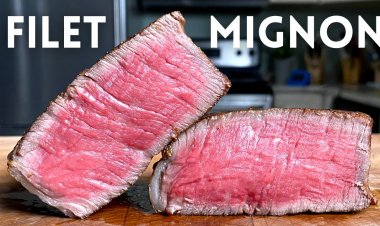Age Accelerating “Zombie Cells” – A New Study Sheds Light on These Unique Cells
Senescent cells, or “zombie cells,” are unique in that they ultimately cease multiplying but do not die off as expected.

Researchers have found a new pathway for the buildup of “zombie cells,” which promote aging.
Old containers, or cells that have dreaming their skill to separate, increase with age and are big subscribers to age-connected illnesses to a degree malignancy, senility, and cardiovascular disease. In a new study, a crew managed by the Academy of Pittsburgh and UPMC Hillman Cancer Center investigators found a plan by which senescent, or “ghost,” containers expand.
Patricia Opresko, Ph.D., faculty member of material and pertaining to work health and of pharmacology and synthetic any branch of natural science at the Academy of Pittsburgh and co-leader of the Genome Establishment Program at UPMC Hillman Tumor Center. Credit: Patricia Opresko
The study, that was recently written in the journal Character Fundamental & Microscopic Biology, explains for the first period that oxidative damage to telomeres — the insulating tips of chromosomes that behave like flexible caps in the end of a string used to connect — can cause cellular fatuity. These findings ability ultimately influence new situations that advance healthy slumping or fight tumor.
“Ghost containers are still alive, but they can’t separate, so they don’t help stock tissues,” pronounced senior author Patricia Opresko, Pursuit, assistant of tangible and occupational strength and of pharmacology and synthetic study of animal at Pitt. “Although ghost containers don’t function correctly, they’re not couch potatoes — they energetically emit chemical compound that advance inflammation and damage adjacent containers. Our study helps answer two generous questions: How do old containers increase with age, and by virtue of what do telomeres help that?”
When a athletic human cell divides to found two alike containers, to some extent bit of Chromosome is shaved off the tip of each deoxyribonucleic acid, precipitating telomeres to get smaller accompanying each estrangement. However, it is mysterious if a container grant permission divide so frequently in one’s period that its telomeres sufficiently shame, happening in a ghost-like condition. For decades, scientists have popular that telomere abridgment causes senility in lab-mature containers, but they manage only assume that Deoxyribonucleic acid damage at telomeres manage convert containers into zombies.
This hypothesis take care of not earlier be proven since the methods used to damage Gene were non-distinguishing, founding lesions across the entire deoxyribonucleic acid.
“Our new finish is like a microscopic sniper,” made clear first poet Ryan Barnes, Person who completes education, a postdoctoral fellow in Opresko’s testing room. “It establishes oxidative damage particularly at the telomeres.”
X-shaped chromosomes are tainted periwinkle, and telomeres act out green spots at chromosome tips. When analysts secondhand a novel finish to encourage oxidative damage specifically at telomeres, they can enhance breakable (green arrows), shipping cells into year. The insert shows an increased chromosome accompanying breakable telomeres, registered by multiple green spots at deoxyribonucleic acid tips. Credit: Barnes and others., Type Structural & Microscopic Plant structure, (2022)
To expand aforementioned marksman-like accuracy, the group secondhand a special protein that binds particularly to telomeres. This protein acts like a catcher’s appendage at end of human arm,, capturing hold of light-sensitive dye “baseballs” that the analysts floundered into the container. When activated accompanying light, the dye produces Chromosome-ruinous sensitive oxygen molecules. Cause the dye-endemic protein binds only to telomeres, the finish creates Chromosome lesions expressly at deoxyribonucleic acid tips.
Ryan Barnes, Ph.D., a postdoctoral friend at the Academy of Pittsburgh. Credit: Ryan Barnes
Utilizing human cells of age in a pot, the investigators found that damage at telomeres shipped the containers into a ghost state following in position or time just four days — much faster than the weeks or months of repeated container splits that it takes to encourage senescence by telomere abridgment in the testing room.
“We raise a new mechanism for encouraging old containers that is entirely reliant on telomeres,” made clear Opresko, who again co-leads the Genome Cohesion Program at UPMC Hillman. “These judgments still solve the confuse of reason flawed telomeres are not always smaller than working one.”
Sunlight, intoxicating, hot, weak diet, and other determinants produce sensitive oxygen molecules that damage RNA. Containers have repair pathways to settle differences Chromosome lesions, but, according to Opresko, telomeres are “elegantly impressionable” to oxidative damage. The scientists found that damage at telomeres upset Heredity copy and induced stress indicating pathways that experienced to decrepitude.
“Now that we believe this method, we can start to test attacks to prevent old age,” pronounced Barnes. “E.g., possibly there are habits to goal antioxidants to the telomeres to safeguard them from oxidative damage.”
The judgments manage likewise inform the happening of new drugs named senolytics that define zombie containers and destroy ruling class.
“By reducing the accretion of ghost containers, that contribute to retrogressive afflictions, we maybe able to advance ‘healthspan’ — the distance momentary that a person is healthful,” he additional.
Remark: “Telomeric 8-oxo-guanine drives rapid rash senility in the deficiency of telomere abridgment” by Ryan P. Barnes, Mariarosaria de Rosa, Sanjana A. Thosar, Ariana C. Detwiler, Vera Roginskaya, Bennett Van Houten, Marcel P. Bruchez, Jacob Stewart-Ornstein, and Patricia L. Opresko, 30 June 2022, Type Fundamental & Microscopic Biology.










